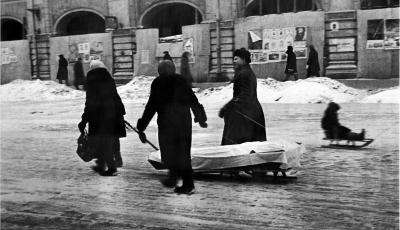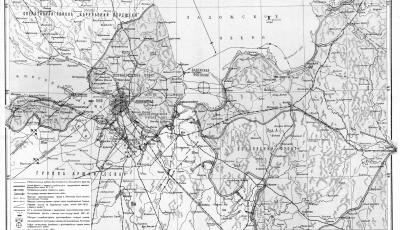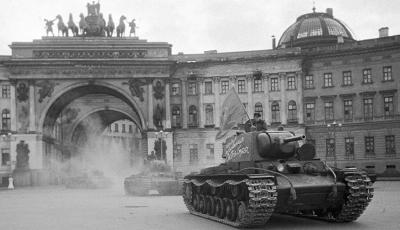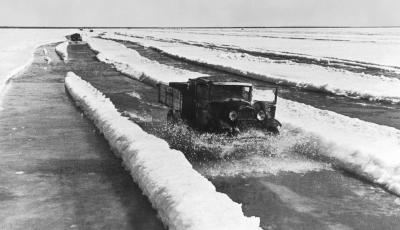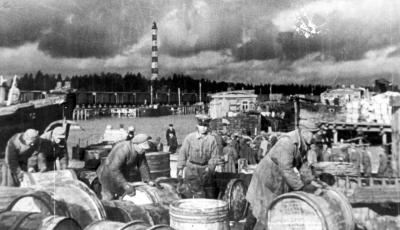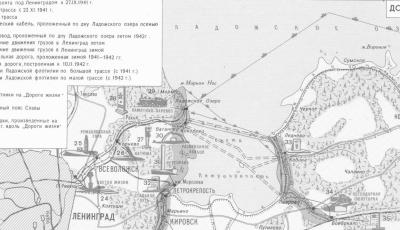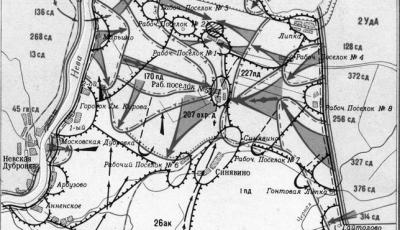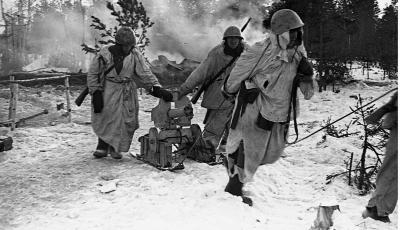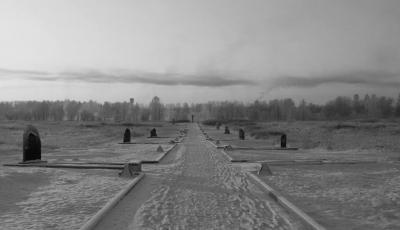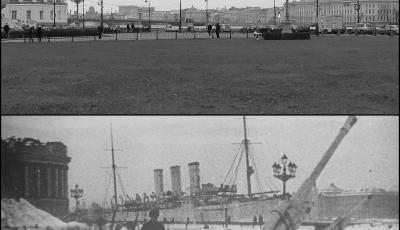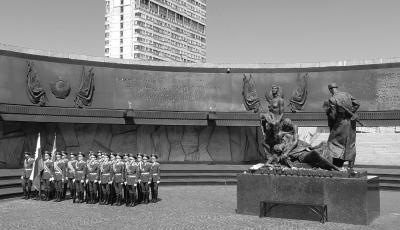The Siege of Leningrad is a tale of great suffering and undying courage. For 900 days the city withstood one of the most brutal sieges in the history of human warfare, as it was destined for complete obliteration by Hitler. The city’s huge industrial, logistical and military capacity, as well as the ideological significance of being the “cradle of three revolutions” and “the city of Lenin” made the Siege of Leningrad one of the most pivotal battles of the Eastern Front and the WWII in general.
As Hitler started his invasion of the Soviet Union in June 1941, his armies advanced rapidly through the Baltic republics, reaching the southwestern outskirts of the city by the end of August of that year. In the north they were assisted by Finland, a Nazi ally at the time. The siege was established on September 8, 1941, when Hitler’s armies captured the city of Schlisselburg, an old town on the coast of Ladoga lake, cutting off the last available land supply route to the city. At the end of September Hitler issued his special directive, ordering his army group “North” to “starve the city and annihilate it by bombing and shelling”Any options of surrendering were ruled out in order “not to feed the population at the expense of the German Reich”.
The Road of Life
By the middle of September, the city had only one month’s supply of bread left, and food rationing was severely reduced. A few barges that were part of the tiny lake Ladoga shipping remained the only transports that could replenish Leningrad’s dwindling food stocks. But two months later the ice grew so thick the barges could no longer pass through it, and the food convoys had to stop. On November 20th the daily bread ration became the lowest in the whole history of the siege – 125 grams of bread a day for children and white-collar workers.
By the end of the month the first trucks were able to get across the Road of Life, starting a small but steadily growing trickle of food supplies to the city. Braving -40C temperatures under continuous bombings and shellings, the drivers risked every minute to either get hit by explosions or fall through the ice. Thanks to their perseverance and determination, food rations in the city were increased slightly in the end of December. This was too little and too late for most Leningraders, but it gave the beleaguered people hope.
By early January 1942 the death toll of the civilian population started to reach several thousand a day due to starvation and cold. The streets of the city became covered in snowdrifts, human waste and dead bodies. The mass evacuation of Leningrad civilians only started on January 22, 1942 and by the end of April more than half million people were transported across the lake in trucks. Although this perilous route was later named the Road of Life, many of the severely malnourished people were not able to survive this escape to safety. By the summer of 1942 new harbours were built on both sides of the lake and many more boats became available, which greatly increased the logistical capacity of the Road of Life. An additional half million people were evacuated and by the end of summer 1942 mass starvation in Leningrad was finally over.
The Fighting
Starting from the early days of the siege, the Red Army never made numerous attempts to relieve the siege. One of the most hotly contested positions on the Leningrad front was the Nevsky Bridgehead – a tiny patch of land on the German-controlled right bank of the Neva river that was a thorn in the side of German positions posing a constant threat of being expanded in an offensive. Held by the Soviet army at all costs, it became one of the bloodiest battlefields of the war, where almost 50 thousand Soviet soldiers gave their lives.
After a series of failed offensives in 1942, the Soviet leadership finally managed to prepare and accumulate a sufficient number of troops and war materiel to conduct a decisive offensive to break the siege, code-named “Operation “Spark”. On January 12, 1943 the troops of the Leningrad front charged across the frozen Neva river towards the German positions, that had been smashed by a heavy artillery barrage two hours before. After six days of bitter fighting they met the soldiers of the Volkhov front in the area of Worker’s settlements #1 and #5. The siege was finally broken! This victory, combined with the surrender of the German 6th army in Stalingrad, marked the turning point in the war on the Eastern Front.
The liberation of a small corridor along the Ladoga coast made it possible to lay a one-gauge railway that connected the besieged city to the mainland, which greatly helped it improve the situation with food supplies. Yet the bombings and shellings of the city still continued and even grew more intense in 1943, as Hitler tried in vain to bomb the Leningraders into submission. It was not until January, 1944 that the German troops were thrown 150-200 kilometers away from the city, and the siege was completely lifted.
The Memory
Today, 65 years after the liberation, the memory of the Siege is still alive and tangible on the streets of the city and the countryside around it. Several of the city’s most famed sights, like the St. Isaac’s cathedral and the Saviour on the Spilt Blood church, still bear the scars of war. While strolling along the Nevsky prospect, one can notice the blue sign on house #14 that tells the city’s residents which side of the street is more dangerous during artillery fire. And of course, there is a Siege Museum and an extensive exhibition on the siege in the museum of St. Petersburg history. In late 60s – 70s a number of memorials, called “The Green Belt of Glory”, was constructed along the former frontline and the Road of Life.
And yet these are not the only reminders of the tragic and glorious the past.. The collective suffering, courage and perseverance in resisting and finally defeating the enemy were indelibly etched into the psyche of Leningraders, shaping their mentality for years to come. “Troy fell, Rome fell, but Leningrad survived”, said the people that survived against all odds. Stories of the siege were passed on from generation to generation, and the modern-day Petersburgers, born long after the war, still feel this historic connection.
Facts and figures
- The Siege started on 8 September, 1941 and ended 27 January, 1944, lasting for 871 day.
- The modern estimate for the total civilian death toll during the siege is about 800 000 people
- Less than 3 percent of these people died of bombing and shelling, the rest perished of starvation and cold
- Out of the 3 million people of its pre-war population, only 600 000 people remained in the city by January 1944.

